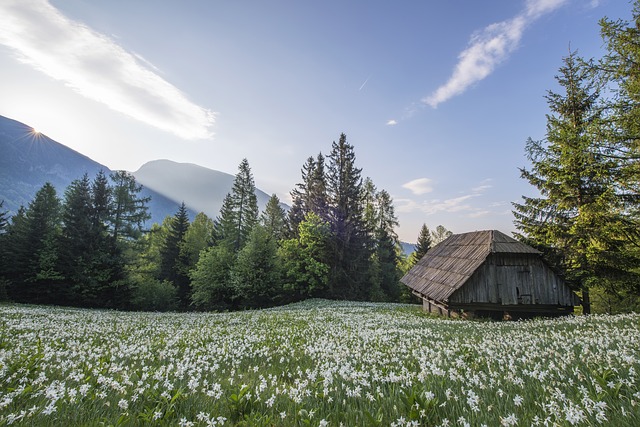Vernacular architecture
Contents |
[edit] Introduction
Vernacular architecture is characterised by its reliance on needs, construction materials and traditions specific to its particular locality. It is a type of architecture which is indigenous to a specific time and place and not replicated from elsewhere. Historically, vernacular architecture has incorporated the skills and expertise of local builders as opposed to formally-trained architects.
Whilst often synonymous with primitive, nomadic or traditional architecture, can also apply to certain types or architecture in developed countries and urban societies.
The development of vernacular architecture centres on the functions that the building type is required to perform. The design then generally evolves over time, becoming more refined and tailored to the contexts in which it exists, including:
- The availability of resources, skilled workforce, and so on.
- Local technology.
- Climate: The amount of sunshine, humidity, rain, wind, temperature profiles, and so on.
- Local culture: The way of life of the occupiers greatly influences the building form. This can include the size of families, the way the building is used, social conditions, local customs, religious values, and so on.
- Environment: Whether it is located near water, woodland, desert or mountainous terrain, and so on.
- Economic conditions.
- Historical influences.
[edit] Historical context
As a concept, the term ‘vernacular’ became commonly used in the 1800s, at a time when western colonial powers were exploring the new worlds that were being discovered. It is sometimes used as a derogatory term, suggesting something that may be quaint, but is derivative and has not been ‘properly’ designed by a professional.
During the first quarter of the 20th century, high profile architects such as Adolf Loos, Frank Lloyd Wright and Le Corbusier began to extol the virtues of vernacular architecture. However, it wasn’t until 1964 that a successful exhibition by Bernard Rudofsky called ‘Architecture without Architects’ that the form became popularized.
[edit] Benefits of vernacular architecture
The benefits of vernacular architecture include:
- Capitalising on local knowledge and traditions.
- Taking advantage of local materials and resources, meaning that they are relatively energy efficient and sustainable.
- Providing a vital connection between humans and the environment in which they live.
- They can be designed specifically with the local climatic conditions in mind, and often perform well.
[edit] Related articles on Designing Buildings
- Antiquities.
- Architectural styles.
- Architecture of Christiania.
- Building Design in the Surrey Hills.
- Caithness Broch Project.
- Context.
- Contextualism.
- Design methodology.
- Earthen construction.
- English architectural stylistic periods.
- Favela.
- Historical versus Modern: Identity through imitation.
- Indigenous people.
- Indigenous knowledge.
- Small vernacular agricultural buildings in Wales.
- The Devetaki Project.
- The history of fabric structures.
- Traditional construction materials on the Isle of Man.
- Traditional knowledge.
- Traditional Homes of the South Downs National Park: an introduction.
- Understanding vernacular architecture.
- Village homes in Western Uganda.
[edit] External references
Featured articles and news
Design and construction industry podcasts
Professional development, practice, the pandemic, platforms and podcasts. Have we missed anything?
C20 Society; Buildings at Risk List 2025
10 more buildings published with updates on the past decade of buildings featured.
Boiler Upgrade Scheme and certifications consultation
Summary of government consultation, closing 11 June 2025.
Deputy editor of AT, Tim Fraser, discusses the newly formed society with its current chair, Chris Halligan MCIAT.
Barratt Lo-E passivhaus standard homes planned enmasse
With an initial 728 Lo-E homes across two sites and many more planned for the future.
Government urged to uphold Warm Homes commitment
ECA and industry bodies write to Government concerning its 13.2 billion Warm Homes manifesto commitment.
From project managers to rising stars, sustainability pioneers and more.
Places of Worship in Britain and Ireland, 1929-1990. Book review.
The emancipation of women in art.
Call for independent National Grenfell oversight mechanism
MHCLG share findings of Building Safety Inquiry in letter to Secretary of State and Minister for Building Safety.
The Architectural Technology Awards
AT Awards now open for this the sixth decade of CIAT.
50th Golden anniversary ECA Edmundson awards
Deadline for submissions Friday 30 May 2025.
The benefits of precast, off-site foundation systems
Top ten benefits of this notable innovation.
Encouraging individuals to take action saving water at home, work, and in their communities.
Takes a community to support mental health and wellbeing
The why of becoming a Mental Health Instructor explained.
Mental health awareness week 13-18 May
The theme is communities, they can provide a sense of belonging, safety, support in hard times, and a sense purpose.
Mental health support on the rise but workers still struggling
CIOB Understanding Mental Health in the Built Environment 2025 shows.
Design and construction material libraries
Material, sample, product or detail libraries a key component of any architectural design practice.


























